Archives & Special Collections
Hours, Policies and and Access
Mission Statement and Collection Policy
Donating to the Archives and Special Collections
Collections
History of UMass Dartmouth & the University Archives
Southeastern Massachusetts Historical Collection
Paul Rudolph & His Architecture
Archives of the Center for Jewish Culture
Franco-American Historical Collections
Congressman Barney Frank Archives Collection
Howard T. Glasser Archives of Folk Music and Letter Arts
Southeastern Massachusetts Technological Institute (SMTI), 1960s
Creation of SMTI, July 7, 1960
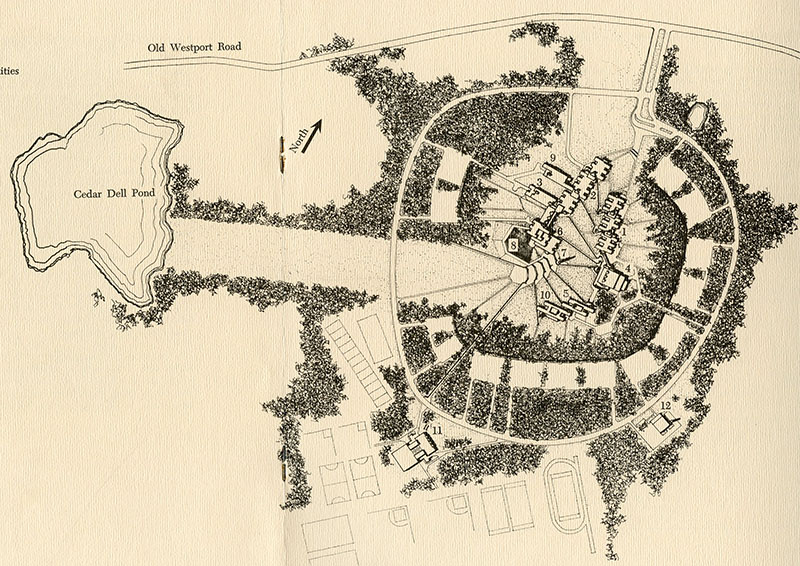
In 1960 Southeastern Massachusetts Technological Institute (SMTI) was created (Acts of 1960, Chapter 543, July 7, 1960) to prepare for the consolidation of the New Bedford Institute of Technology and Bradford Durfee College of Technology. Within the Act, the purpose of SMTI was set forth in Section 1, Chapter 75B: “The Southeastern Massachusetts Technological Institute .. shall be maintained by the Commonwealth for the purpose of giving instruction in the theory and practical arts of engineering and science, the liberal arts, and other appropriate curricula which shall be established from time to time to include such scientific, technological, and other studies as may be deemed desirable by the Board of Trustees of said Institute.”
At that point it was on paper only. There was no campus in Dartmouth, no staff, faculty or students. The SMTI board was separate from the boards of trustees of the New Bedford Institute of Technology and the Bradford Durfee College of Technology. These two schools remained separate campuses and retained their names for the next four years, until the final consolidation went into effect on July 1, 1964 (Acts of 1964, Chapter 495, June 10, 1964). During this four-year period the SMTI trustees hired a president, located a site for the new campus, and worked with lawmakers to acquire funding for planning and construction.
The photographs below are from the Archives and Special Collections, SMTI Construction Photographs, PC 3. All from between 1963 and 1966.
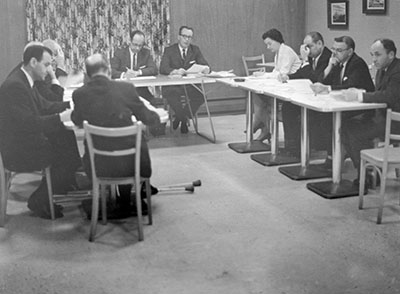
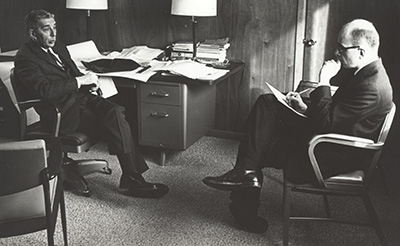
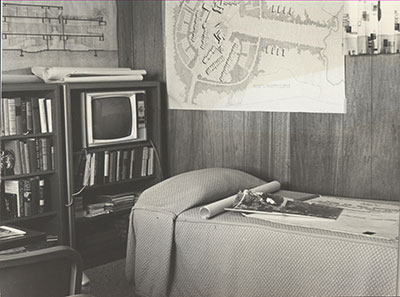
1960-1964 are considered the transition years because the textile schools continued to operate while SMTI was being formed. The SMTI Board of Trustees first met on December 20, 1960 in a suite of rooms they rented in the Capri Motel on Route 6 in Dartmouth. SMTI’s first president, Joseph Leo Driscoll, was appointed on September 26, 1962. Before Driscoll was hired the trustees chose a site for the campus from 740 acres of woodland and farmland in Dartmouth, a site easily accessible by automobile. According to Walter Cass, President Driscoll was publicly instructed to build a multi-purpose, multi-level institution of higher education. Working long days, Driscoll set to planning the physical plant. He secured the appointment of Dr. Samuel A. Stone, Professor of Mathematics at Bradford Durfee College, as his special assistant on academic planning matters. The trustees employed the firm of Arthur D. Little to prepare a report on current and projected educational needs of Southeastern Massachusetts and an outline of what SMTI would need to serve the projected student body. The state hired the architectural firm of Desmond and Lord of Boston, who then in turn hired Paul Rudolph, to design the campus.
Groundbreaking for a New Campus – June 14, 1964

Text by Jacob Miller
Governor Endicott Peabody said, during groundbreaking ceremonies, that Southeastern Massachusetts Technological Institute is “a symbol and a promise by the Commonwealth that we shall do everything we can to protect and forward the economy of this area.” This momentous event in the educational history of Southeastern Massachusetts drew more than 500 spectators to the grassy field where the new area university will open its doors to students in the fall of 1965. “Southeastern Massachusetts Technological Institute is destined to become the apple of the eye of this region.” (from a December 1964 Standard-Times article entitled “Did SMTI Board Stray?”).
A short time after the groundbreaking, Southeastern Massachusetts Technological Institute was featured in the Boston Globe. With a planned 3,000-student enrollment projection, then President Dr. Driscoll cited, the school earned overwhelming support from the residents in the New Bedford-Fall River area because of its potential service to youth and its anticipated role in the economy.
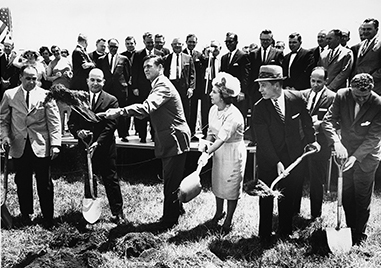
Originally passed by the Massachusetts Legislature in 1960, this reaffirmation legislation allowed for the combination of two SouthCoast technical colleges into one. Despite political uncertainties, the SouthCoasts’ state delegation was able to gain support for a world-class university in the region. Southeastern Massachusetts Technical Institute was strategically placed between New Bedford and Fall River to be the region’s university. Numerous reports cited the people of Southeastern Massachusetts “awaiting the day when they can point with justifiable pride to their university.”
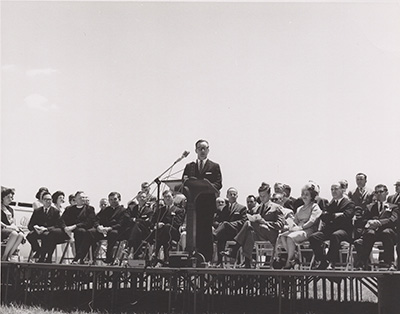
The ground was broken on farmland in Dartmouth four days after Governor Endicott Peabody signed the enabling legislation into law. Previous Governor Foster Furcolo, a staunch supporter of SMTI said, in a 1964 Standard-Times article, “It becomes more clear with each passing year that the people and the economy of Southeastern Massachusetts have been sorely handicapped by the inadequacies of State support for higher education in the area… The young people of the area have the right to same opportunities for training in technology, the arts, the sciences and the professions which young men and women in other parts of the Commonwealth receive.”
Facsimile of the June 14, 1964 program for the groundbreaking (PDF)
Designing a Campus
Although Paul Rudolph designed the campus master plan and proposed buildings, the Boston architectural firm of Desmond and Lord was tasked with carrying out the architect’s vision in designing the buildings and producing the construction drawings. Grattan Gill, of Desmond and Lord, was job captain and chief architect of the campus. He was also an admirer of Rudolph and saw that Rudolph’s vision was preserved throughout. For more on the architect, go to UMass Dartmouth’s Paul Rudolph website. To listen to Grattan Gill’s oral history interview, please contact the archives at jfarrar@umassd.edu.
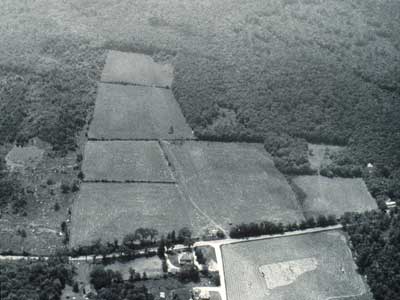
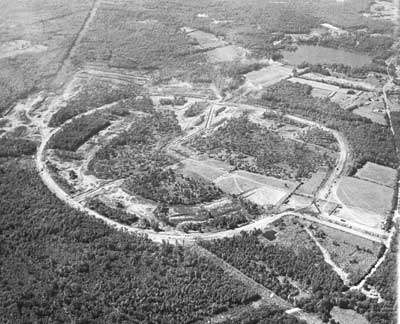
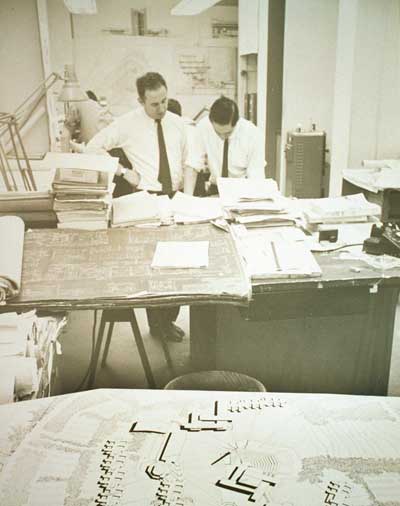
Consolidation at Last! July 1, 1964
The Acts and Resolves of the Commonwealth of Massachusetts for 1964, Chapter 495, was approved by the legislature on June 10, 1964 (see image below). Its language provided for the consolidation of New Bedford Institute of Technology and Bradford Durfee College of Technology, to take place at the beginning of the 1965 fiscal year, July 1, 1964. The trustees for NBIT met for the last time on June 25, 1964, and the trustees of BDCT met for the last time on June 8, 1964.
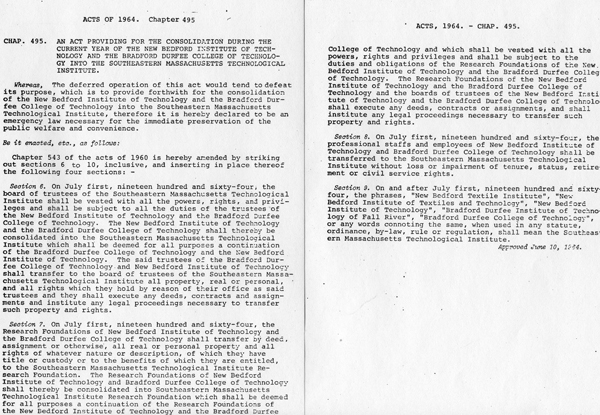
First Academic Building Opens, June 5, 1966
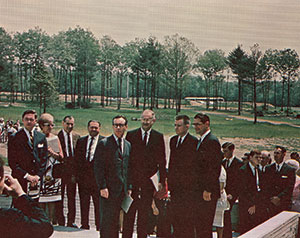
The first two weeks in June, 1966 were a time of celebration on the SMTI campus. The formal dedication of the first academic building took place on June 5, 1966. This building is now LARTS, the Liberal Arts building, but from the beginning and for many years it has also been referred to as “Group I.” The day included the official “Presentation and Acceptance of the Building,” a formal dedication program which included remarks from William F. Long, Chairman of the Board of Trustees, the Lieutenant Governor, Elliot Richardson, architect Paul Rudolph, and President Joseph L. Driscoll. Following the program was an open house.
Four days later, on June 9, 1966 was the formal investiture of SMTI’s president Joseph L. Driscoll, and on June 12 the first SMTI commencement to take place on campus was held, graduating 219 students.
Audio of the events of June, 1966 is available by request from the university archivist at jfarrar@umassd.edu. A facsimile of the dedication program and other items documenting this week are also available for consultation in the Claire T. Carney Library Archives and Special Collections.

Full text of the Program for the Dedication of the First Academic Building (PDF)

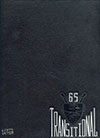
Transitional SMTI/New Bedford Tech Yearbook for 1964-1965 (PDF)
Archives Note
All of these events are documented in the Claire T. Carney Library Archives and Special Collections. For example, consult URC 3 (PDF) for a list of the records of the Board of Trustees of SMTI/SMU available for consultation in the archives. Also of interest is a collection of land appraisals, with photographs as the farms and houses appeared in 1963. These can be accessed under URC 56 (PDF), Acquisition of Land for the New Campus.
Reference sources for further reading:
Walter J. Cass, “A History of Southeastern Massachusetts Technological Institute in Cultural Perspective,” Dissertation, Boston University School of Education, 1967. (copy in archives LD 5080.C272)
Frederick V. Gifun, UMass Dartmouth 1960-2006: Trials and Triumph, 2007 (LD3234.M28 G4 2007)
Online LibGuide “Sources for the Study of UMD History” prepared by the Archives and Special Collections Librarian.
